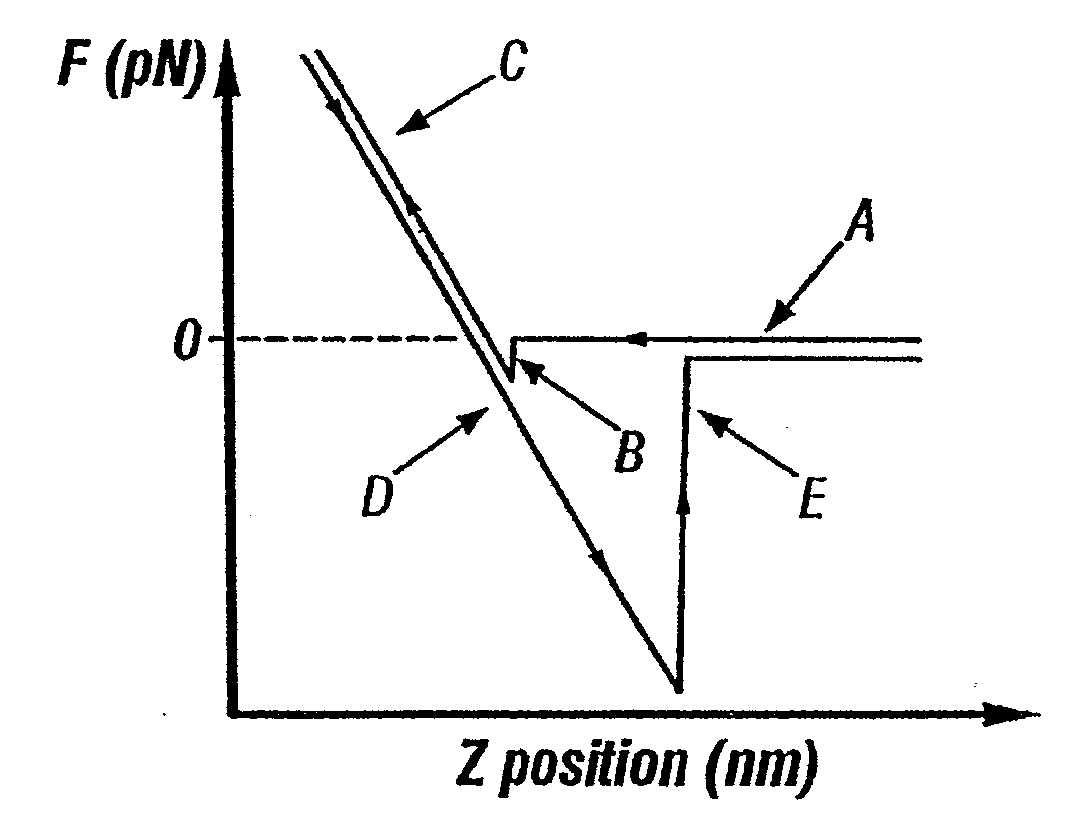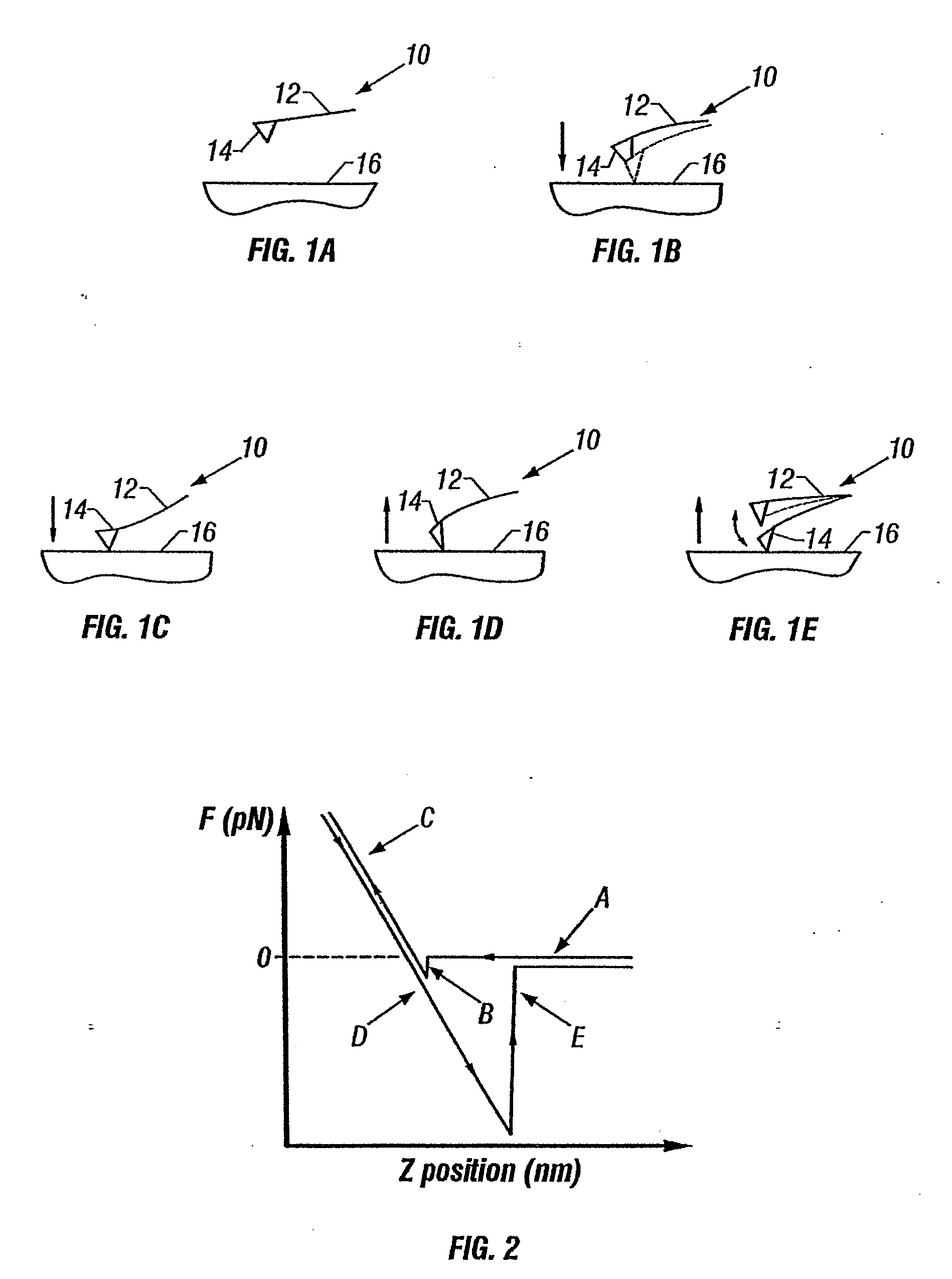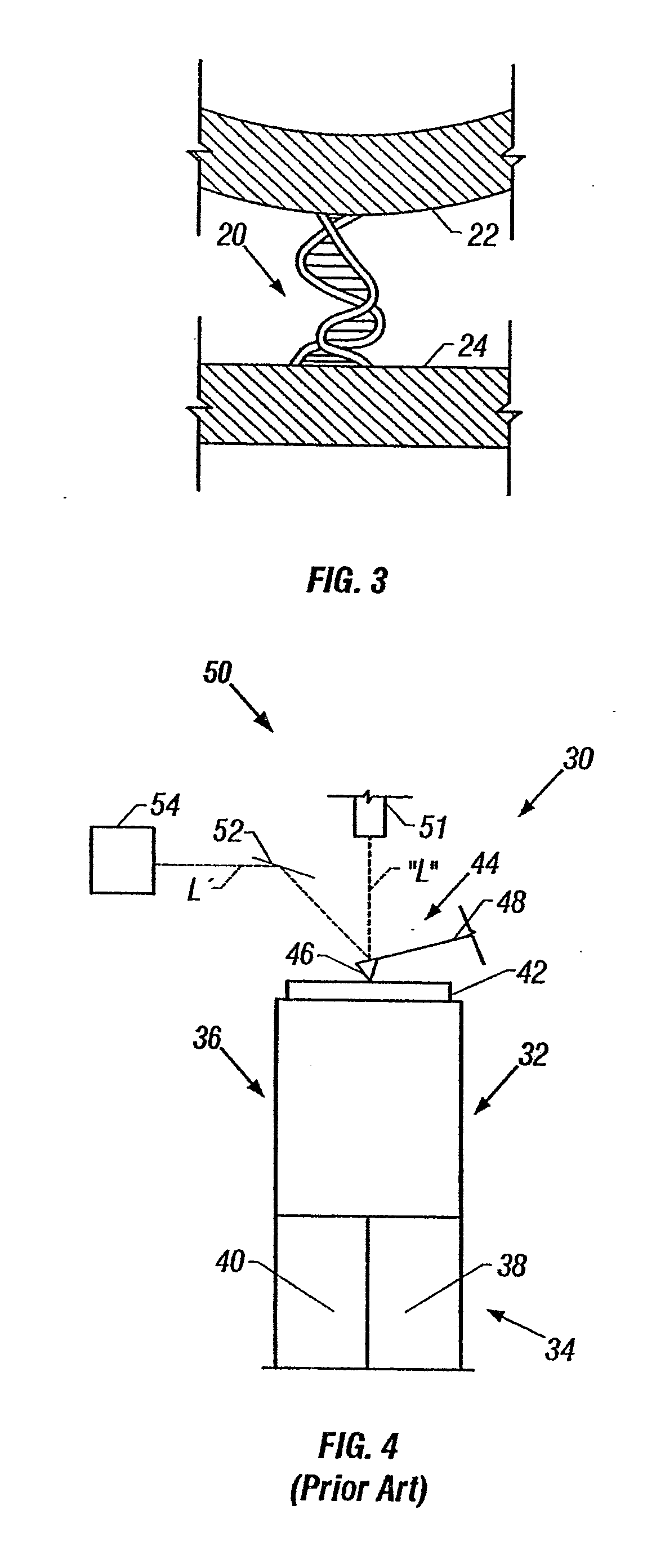Force scanning probe microscope
a scanning probe and microscope technology, applied in the field of probe microscopes, can solve the problems of inability to predict piezoelectric scanners, inability to explore the mechanical behavior of thin films from known materials properties, and inability to fully predict the behavior of piezoelectric scanners, etc., to maximize the integrity of force curve measurements, improve the accuracy of force measurements, and improve the effect of force measurements
- Summary
- Abstract
- Description
- Claims
- Application Information
AI Technical Summary
Benefits of technology
Problems solved by technology
Method used
Image
Examples
Embodiment Construction
[0072] Turning initially to FIG. 6, a force scanning probe microscope (FSPM) 100 that provides highly accurate force measurements, including force volume measurements, with a high degree of data acquisition flexibility is illustrated. FSPM 100 includes an atomic force microscope (AFM) 102, a data acquisition and control system 104, and a user interface 106. Probe microscope 102 includes a probe 108 having a cantilever 110 extending from a substrate 112. Cantilever 110 includes a free end to which a tip 114 is coupled so that it extends generally orthogonal to cantilever 110. Probe 108 is placed in a support (not shown), such as a conventional probe holder, thus collectively defining a probe assembly.
[0073] Next, a sample 116 is mounted on a piezoelectric scanner 118 in a conventional fashion. The sample 116 may, for instance, comprise a single molecule of a substance of interest. In the preferred implementation, scanner 118 is used to actuate the sample in three substantially ortho...
PUM
 Login to View More
Login to View More Abstract
Description
Claims
Application Information
 Login to View More
Login to View More - R&D
- Intellectual Property
- Life Sciences
- Materials
- Tech Scout
- Unparalleled Data Quality
- Higher Quality Content
- 60% Fewer Hallucinations
Browse by: Latest US Patents, China's latest patents, Technical Efficacy Thesaurus, Application Domain, Technology Topic, Popular Technical Reports.
© 2025 PatSnap. All rights reserved.Legal|Privacy policy|Modern Slavery Act Transparency Statement|Sitemap|About US| Contact US: help@patsnap.com



